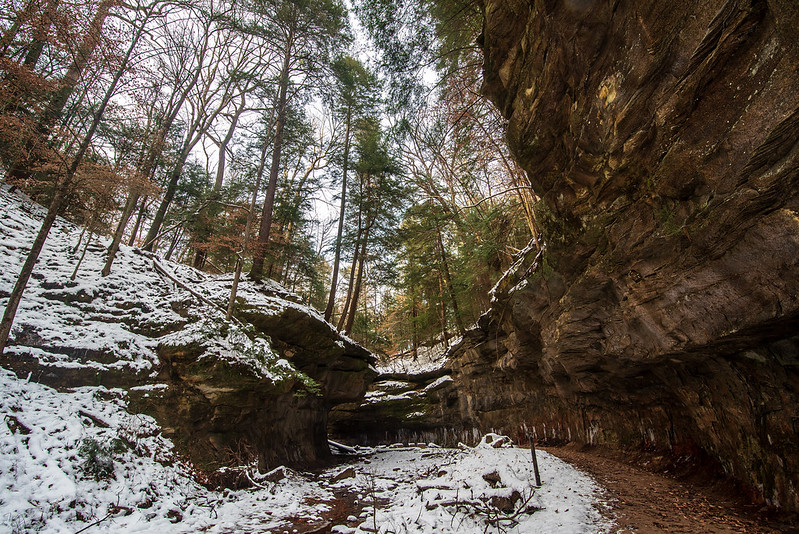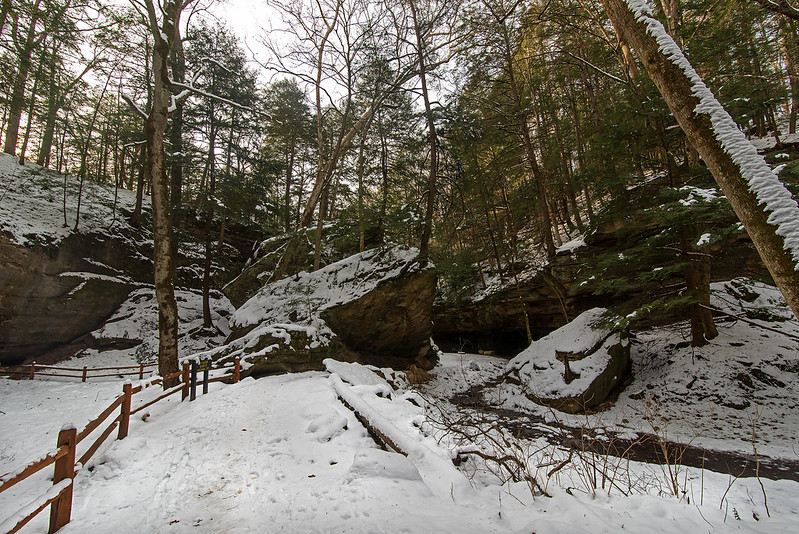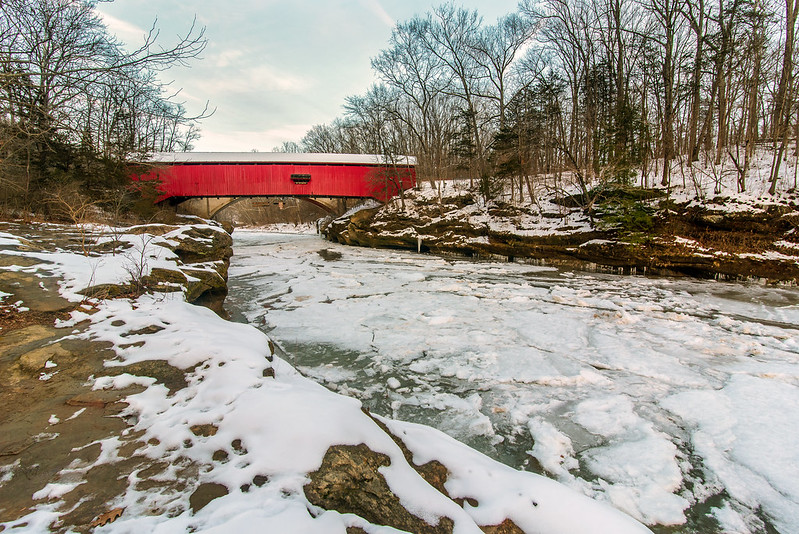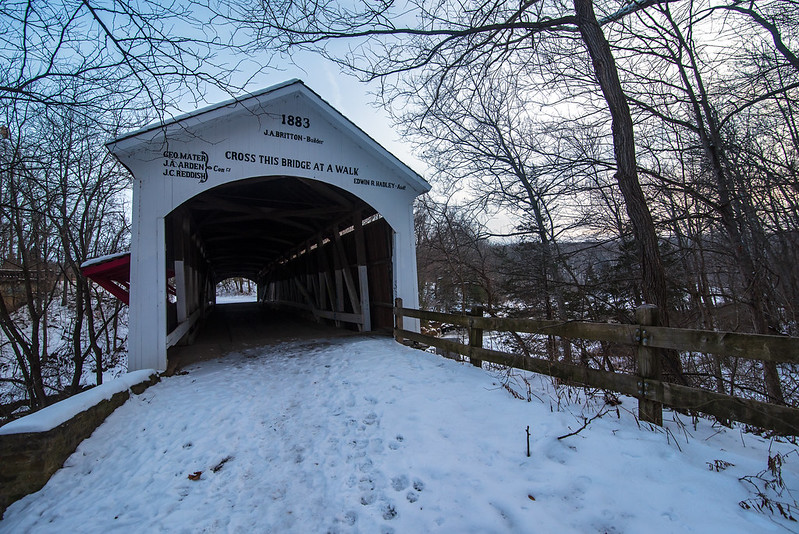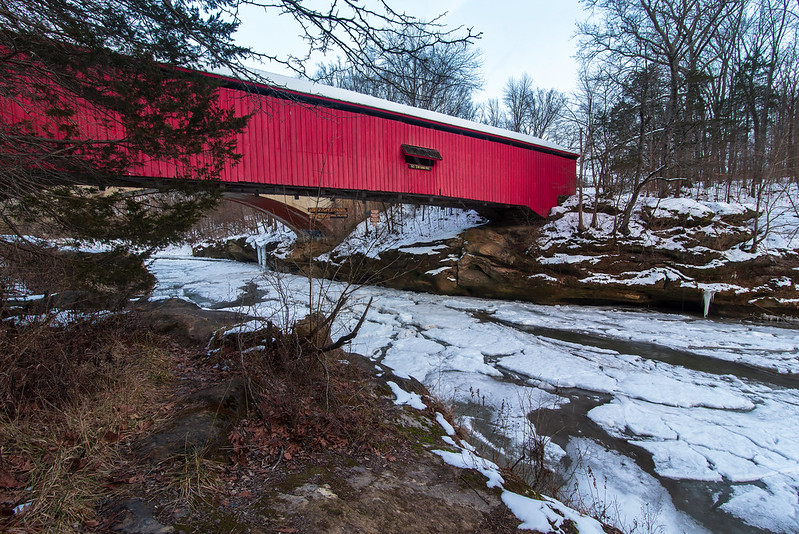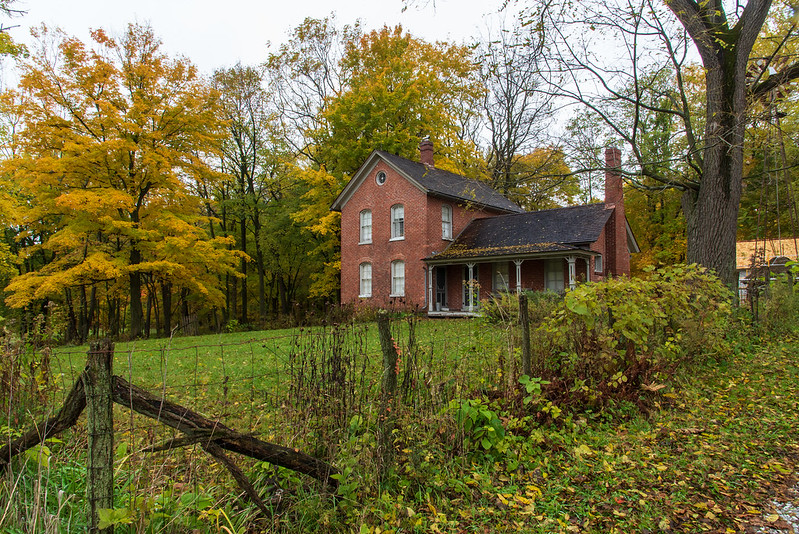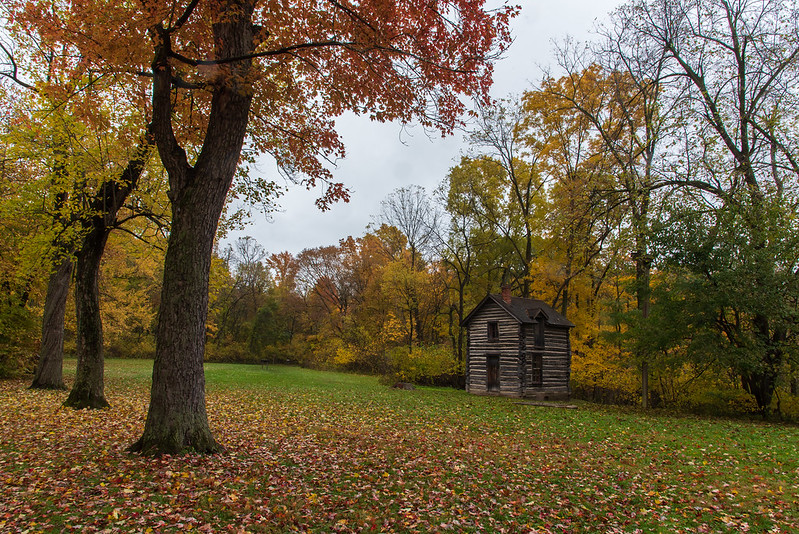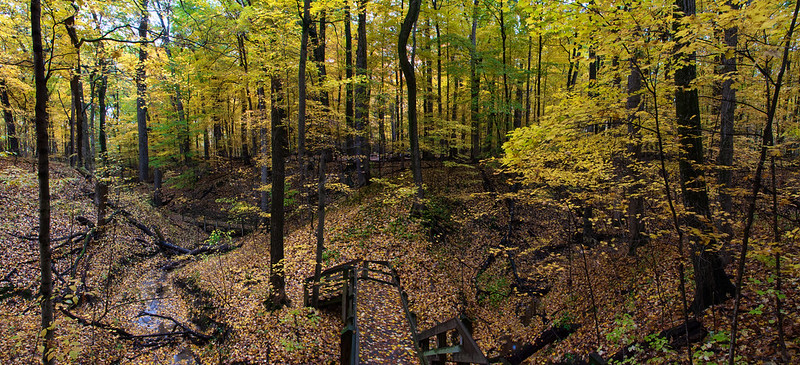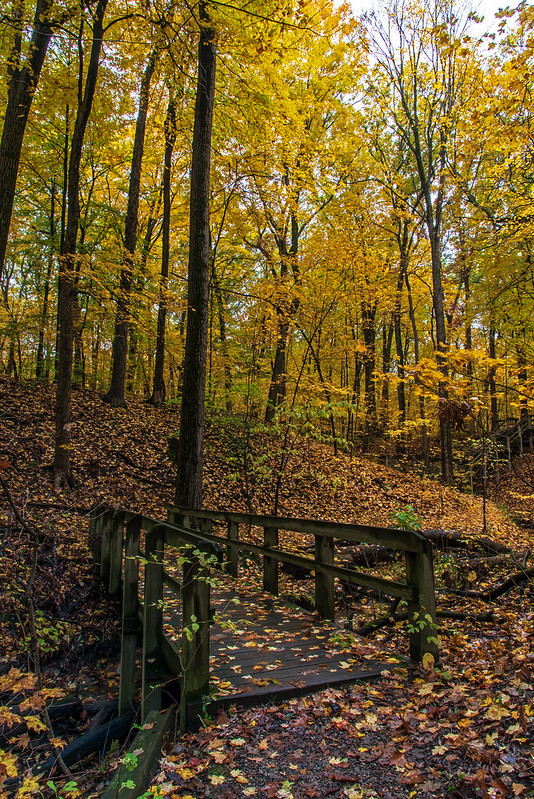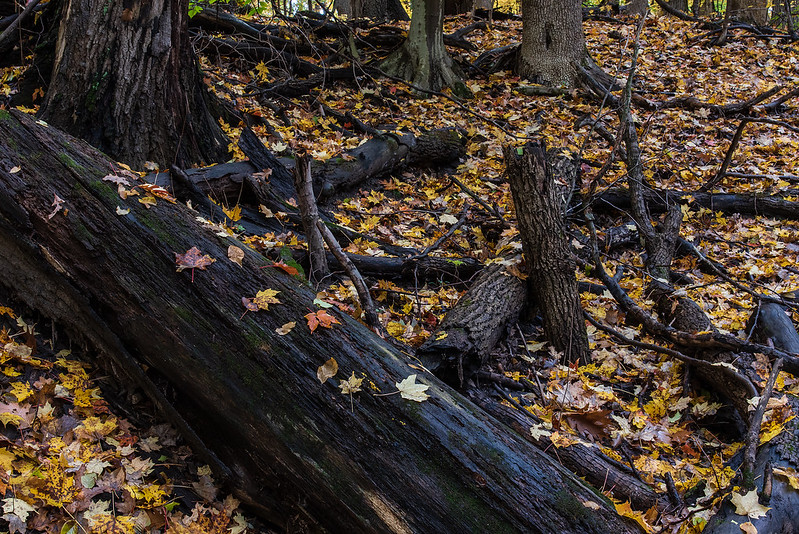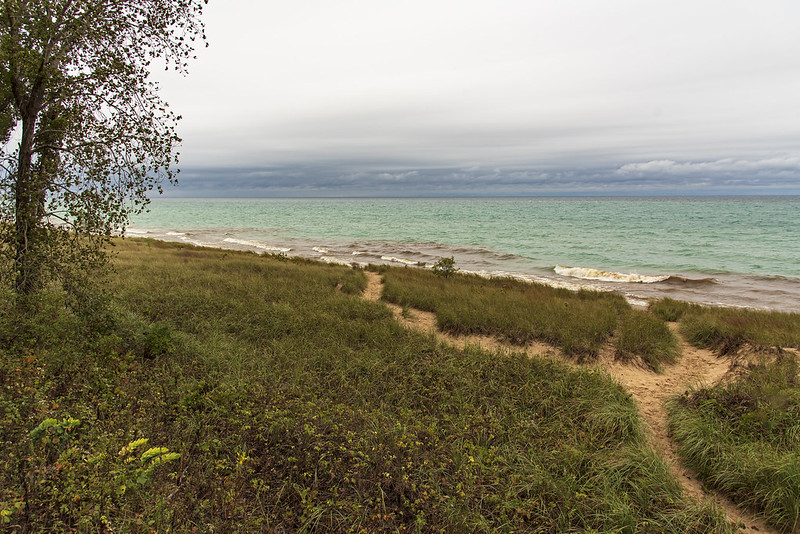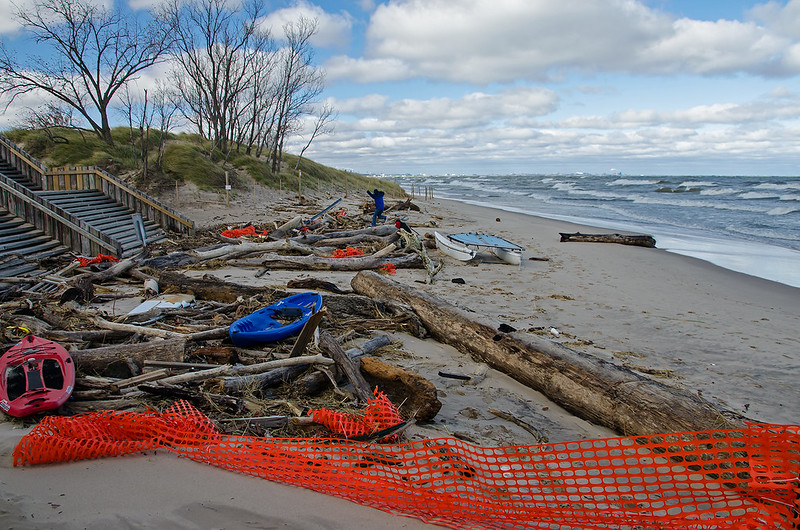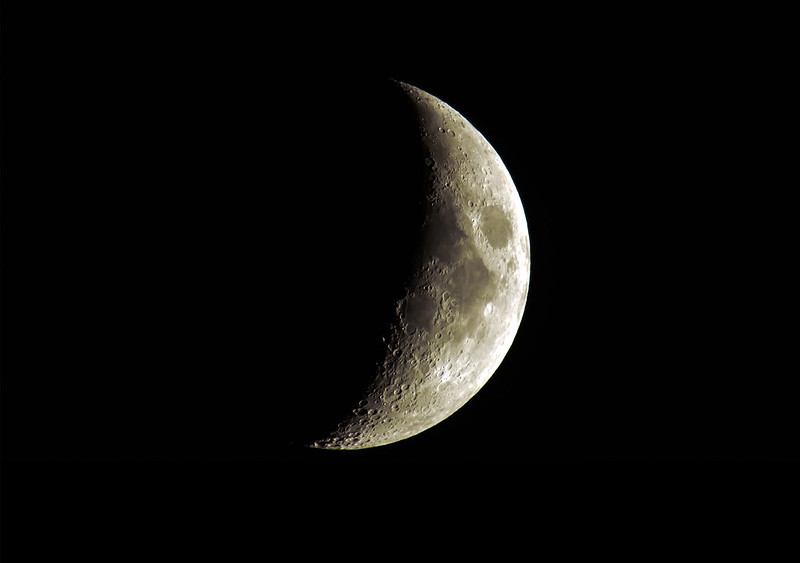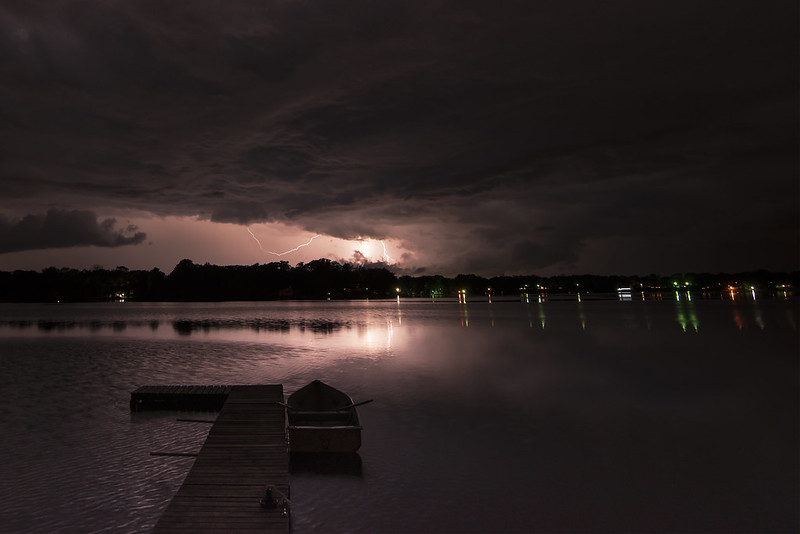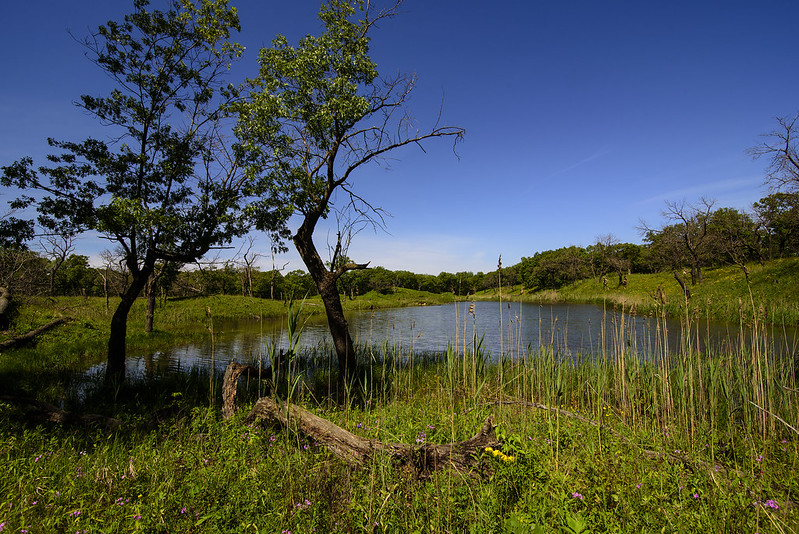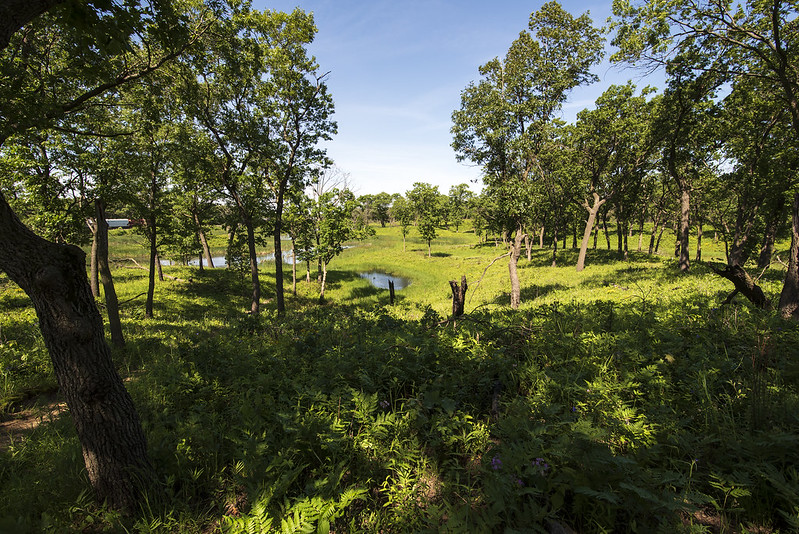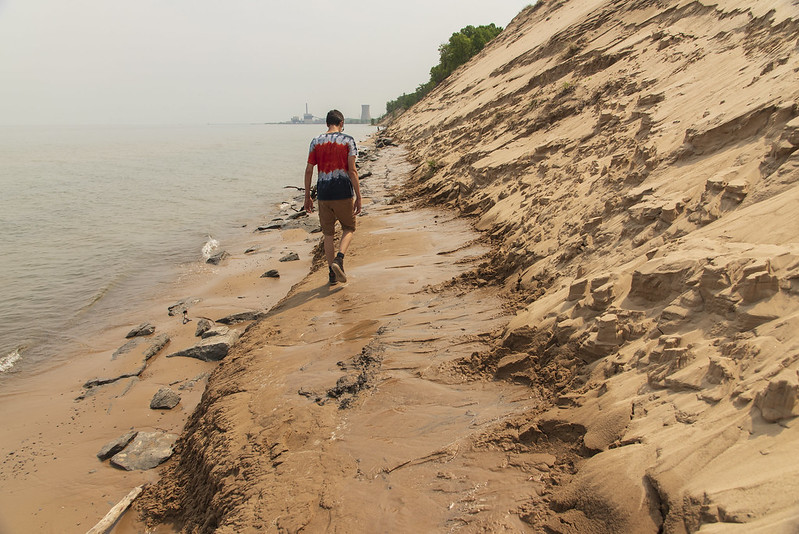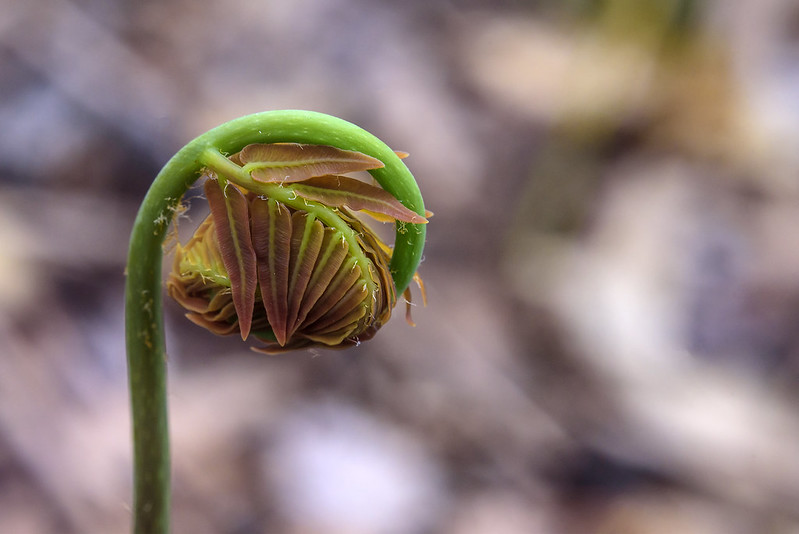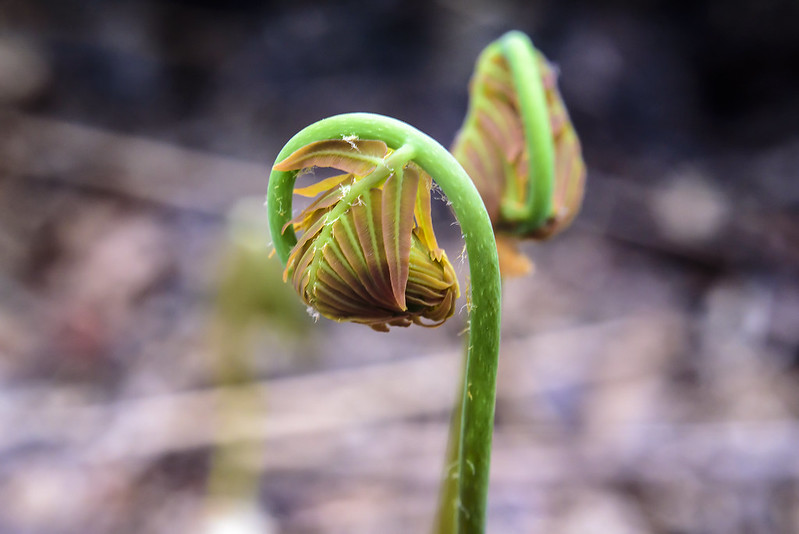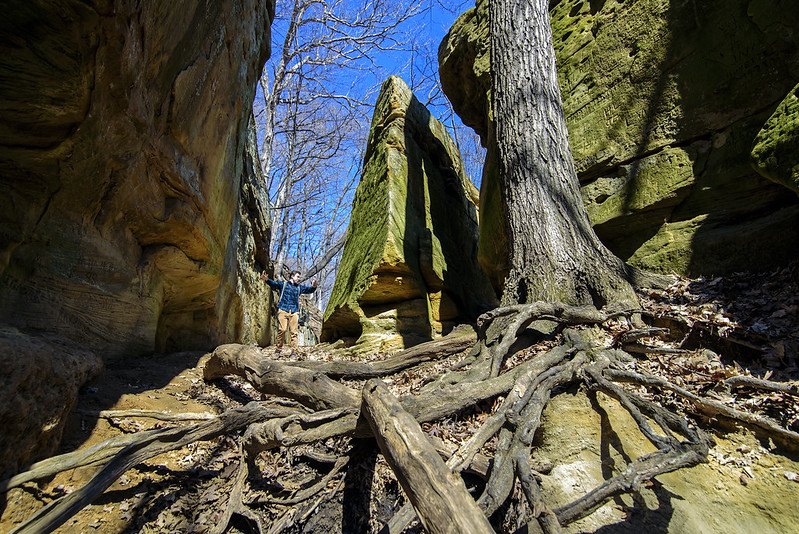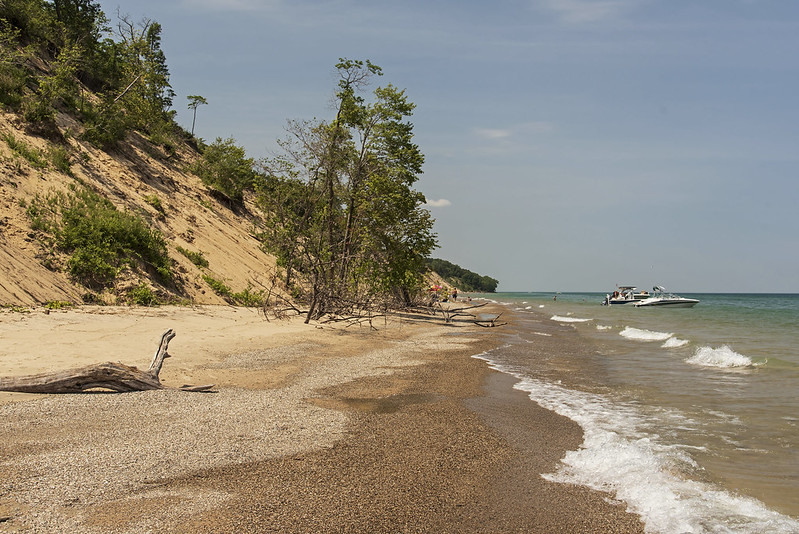
Contrary to what many people believe, the dunes along the southern shore of Lake Michigan are ever-changing - have been, and will continue to be. The forces of nature such as rain, wind, and the waves erode parts of the beach and dune, and build another.
Rising water levels this year, along with some "starving" of the beach are contributing to the collapse of portions of the windward sides of the dunes in the Indiana Dunes National Park. A starving beach is one where the natural replenishment of sand is slower than the loss of the sand due to wind and wave action, so the beach and associated dunes lose sand.
These dunes are crumbling at a relatively fast rate. The paths and trails that once meandered along the ridge are long gone - washed into Lake Michigan - not because of people walking on them, as many will attempt to mislead the visitor. Walking on some sand dunes and plants will certainly disrupt the natural state of the dunes, and often kill the plants that hold the dunes in place. But this is a case of the lake taking over, not human activity. The Michigan City pier a mile or so away has been blamed for some beach starvation, and while this may be true to some extent, it seems unlikely that the single pier could affect the beaches miles away to such a great extent.
The trees seen in this photograph were growing on the top of the dune just a few weeks ago. The waves undermined the foot of the dunes, and slowly collapsed the side. Some trees fell sideways and were washed away by the waves, but these just slid down in an upright position, and the waves buried them in sand. They appear to have been there for years, but in fact, they have only been there a few short weeks.

Wind, rain, and gravity have all combined to create some interesting formations as the dunes erode. These formations look a lot like the mountains and stone formations of Bryce Canyon National Park. They change right before your eyes, small amounts of sand slide slowly down the dune, others crumble and chunks roll down. Some of this movement resembles waterfalls, but of sand. Beautiful fans of sand form at the foot of the dunes, but are quickly washed away by the waves as soon as the winds pick up on Lake Michigan.

While it's sad to see some of these majestic dunes crumble - especially the ones I used to frequent, it's all just a natural part of the dune's life cycle.
 Immediately after climbing the small waterfall on trail 3, the canyon narrows. Depending upon the amount of recent rainfall, the stream could be a bit too deep to walk through (or in cold weather, even 3 inches of water is too much), so small stairs and hand-holds have been carved into the canyon walls. These "stairs" are about six inches wide and four inches deep, and barely have enough room for the tips of your shoes, but they are handy if you wish to keep your feet dry.
We decided to stay on the ground and risk getting our feet wet because the recent snowfall made the canyon walls and "stairs" a bit too slippery. When the park is crowded this is usually a bottle neck as people wait their turn to navigate the small carved stairs.
Immediately after climbing the small waterfall on trail 3, the canyon narrows. Depending upon the amount of recent rainfall, the stream could be a bit too deep to walk through (or in cold weather, even 3 inches of water is too much), so small stairs and hand-holds have been carved into the canyon walls. These "stairs" are about six inches wide and four inches deep, and barely have enough room for the tips of your shoes, but they are handy if you wish to keep your feet dry.
We decided to stay on the ground and risk getting our feet wet because the recent snowfall made the canyon walls and "stairs" a bit too slippery. When the park is crowded this is usually a bottle neck as people wait their turn to navigate the small carved stairs.
 Soon after these two tight areas of the canyon, you reach the turn toward the Punch Bowl, a small waterfall with some very interesting canyon features. Heading forward, the canyon begins to open up, and with the person walking along the trail, you get the idea of just how large this part of the canyon is.
Soon after these two tight areas of the canyon, you reach the turn toward the Punch Bowl, a small waterfall with some very interesting canyon features. Heading forward, the canyon begins to open up, and with the person walking along the trail, you get the idea of just how large this part of the canyon is.

